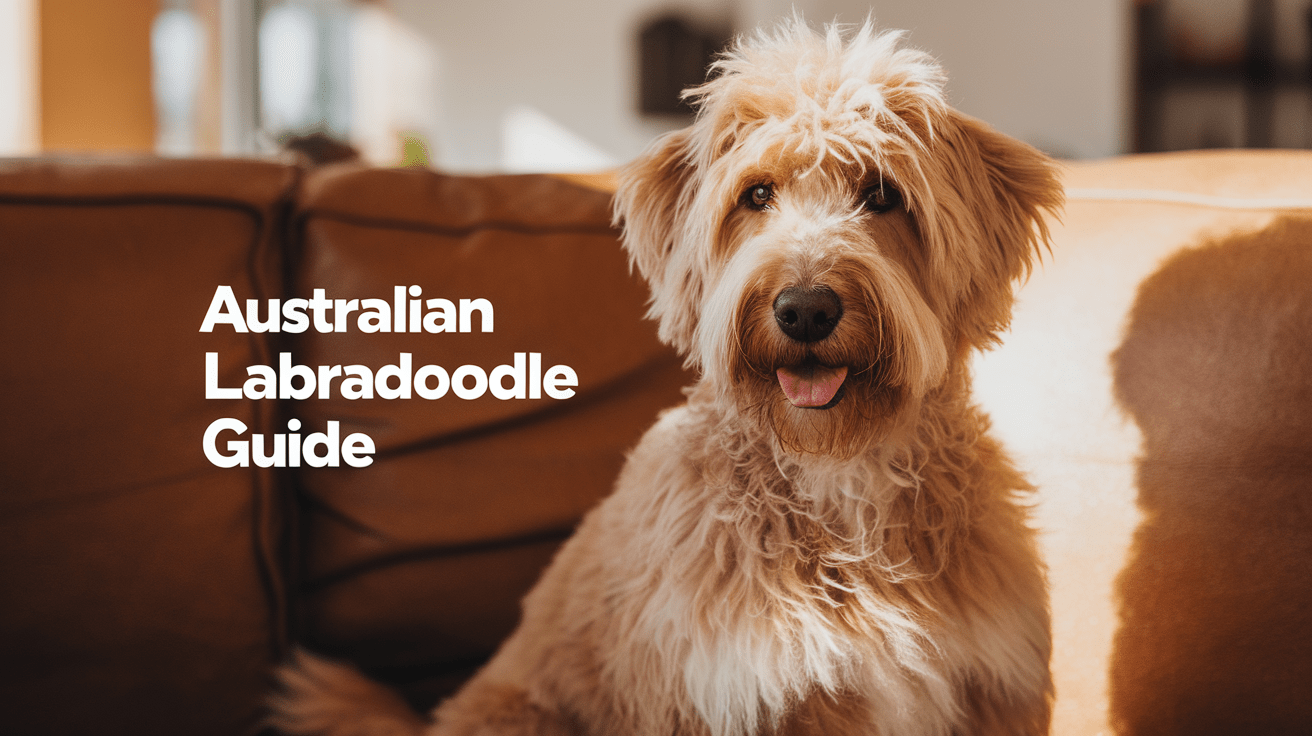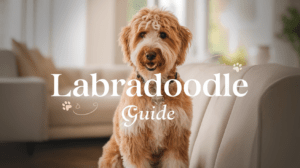Australian Labradoodle Key Takeaways
- ✓ Unique Breeding: Australian Labradoodles are created from up to six different breeds, making them more predictable in temperament than standard Labradoodles.
- ✓ Exercise Needs: These dogs require 30-60 minutes of daily exercise and regular mental stimulation to maintain their balanced temperament.
- ✓ Grooming Requirements: While low-shedding, they need regular brushing 2-3 times weekly and professional grooming every 6-8 weeks.
- ✓ Health Considerations: Generally healthy with a 12-14 year lifespan, but require regular vet check-ups and monitoring for specific breed-related conditions.
Looking for the perfect blend of intelligence, hypoallergenic qualities, and lovable personality? The Australian Labradoodle might just be your dream dog! As a veterinarian with over 15 years of experience working with designer breeds, I’ve seen firsthand why these charming pooches have become increasingly popular. According to the American Kennel Club, designer breeds like Labradoodles have seen a remarkable 200% increase in ownership over the past decade.
Unlike their standard Labradoodle cousins, Australian Labradoodles are more than just a Labrador-Poodle mix. These clever canines are the result of careful breeding with up to six different parent breeds, creating a more consistent and predictable temperament. Whether you’re a first-time dog owner or an experienced pet parent, this comprehensive guide will help you understand why these fluffy companions might be the perfect addition to your family.
What Is an Australian Labradoodle?
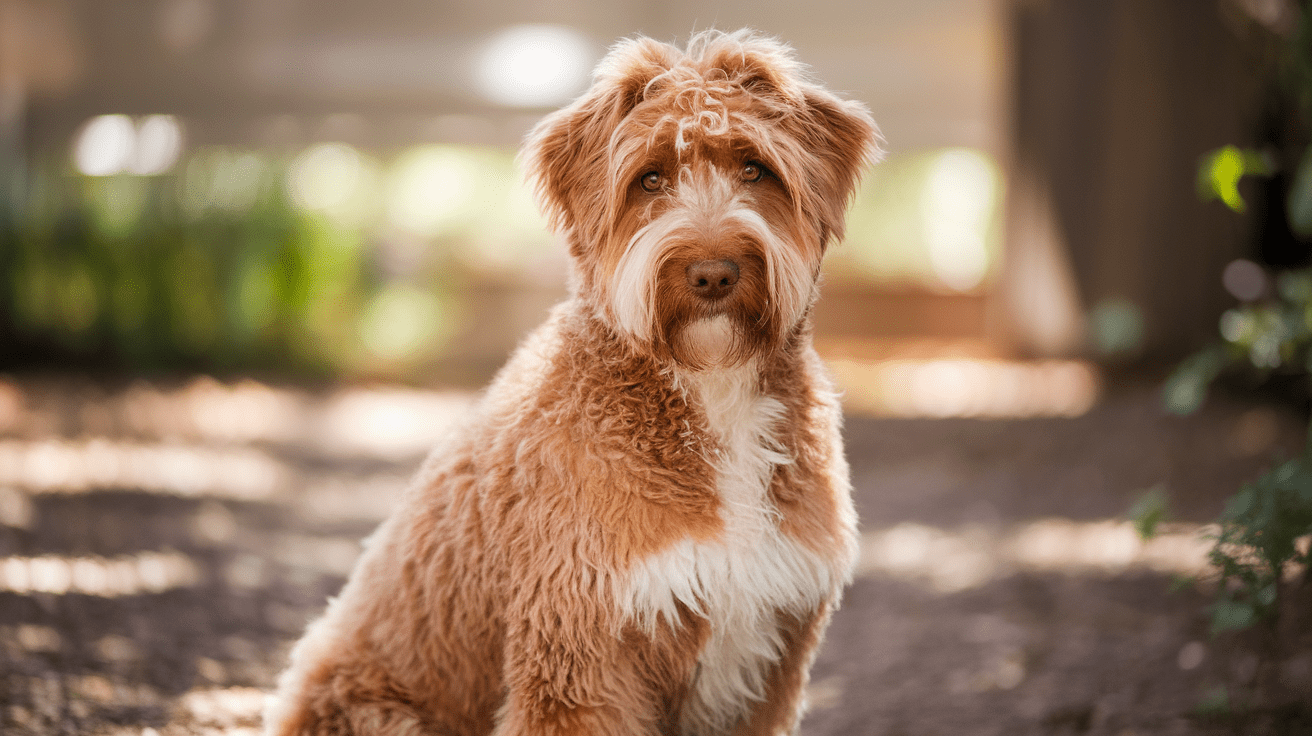
As someone who’s examined countless designer breeds in my veterinary practice, I can tell you that the Australian Labradoodle stands out as a truly unique creation. Unlike many designer dogs that simply combine two breeds, this intelligent canine is the result of a sophisticated breeding program that began in Australia during the 1980s.
Think of the Australian Labradoodle as a master chef’s signature dish – it’s not just about mixing two ingredients together. According to the Australian Labradoodle Association of America, these dogs are crafted from a careful blend of up to six different breeds: Labrador Retriever, Poodle, Irish Water Spaniel, Curly Coat Retriever, American Cocker Spaniel, and English Cocker Spaniel.
Origins and Development of the Breed
The journey of the Australian Labradoodle began with a visionary goal: to create a hypoallergenic guide dog. The development wasn’t just a happy accident – it was a carefully planned breeding program that took years of dedicated work. In my experience treating these dogs, I’ve seen how this thoughtful breeding has resulted in consistently friendly and intelligent companions.
Difference Between Australian and Standard Labradoodles
Here’s where many people get confused. A Standard Labradoodle is simply a Labrador crossed with a Poodle. An Australian Labradoodle, however, is much more complex. It’s like comparing a family recipe passed down through generations to a simple two-ingredient mix. The Australian variety offers more predictable traits in terms of coat type, temperament, and size.
Breed Standards and Characteristics
These dogs typically stand 14-24 inches tall and weigh between 15-65 pounds, depending on their size variety (miniature, medium, or standard). What I particularly love about them is their fleece or wool-textured coat, which comes in a rainbow of colors including chocolate, caramel, cream, and red. Their most distinctive feature isn’t just physical – it’s their remarkable combination of intelligence and emotional sensitivity that makes them exceptional family companions.
Living with an Australian Labradoodle
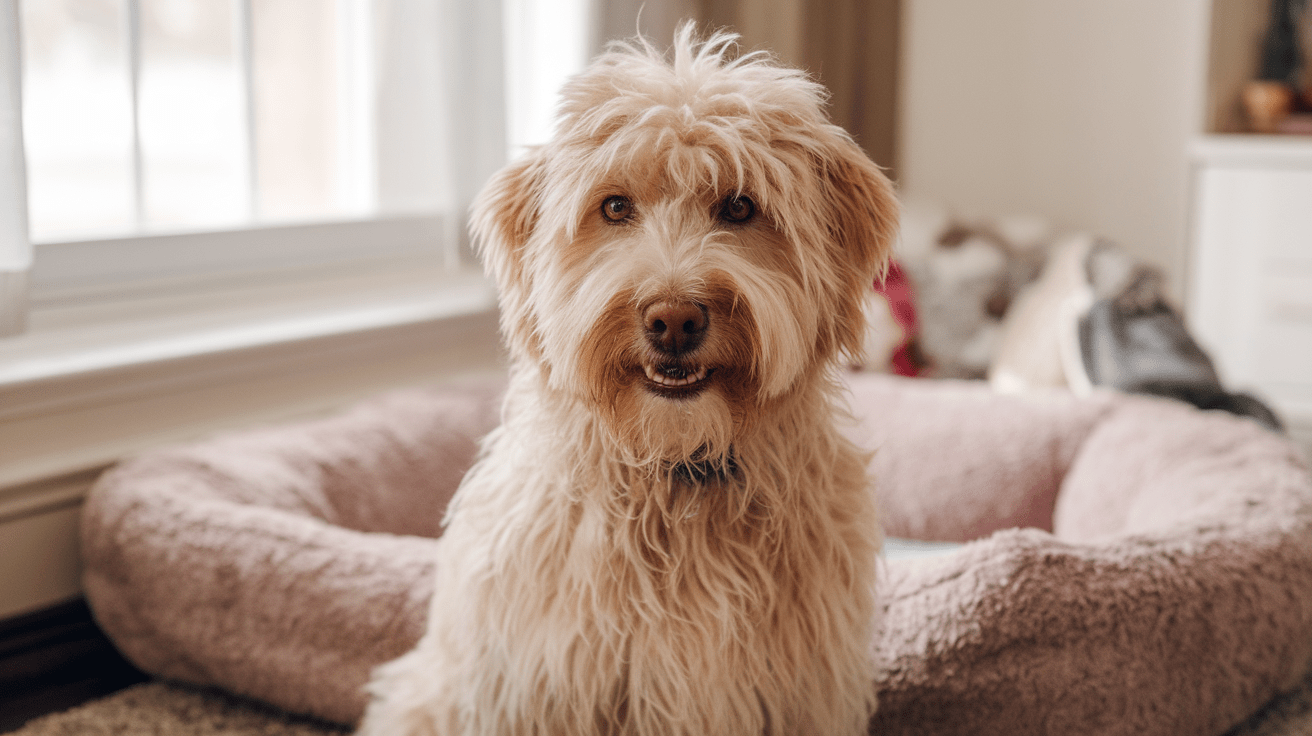
Having watched countless Australian Labradoodles grow from puppies to adult dogs in my practice, I can confidently say these intelligent creatures make exceptional family companions. According to a Frontiers in Veterinary Science study, designer breeds like Australian Labradoodles show remarkably high scores in trainability and social behavior, making them ideal for both novice and experienced dog owners.
Temperament and Personality Traits
Think of an Australian Labradoodle as that friend who’s always ready for anything – whether it’s a quiet evening at home or an adventurous hike. These dogs are known for their adaptable nature and gentle disposition. I remember treating one particularly memorable Australian Labradoodle who would instinctively lay his head on my anxious patients’ laps during their visits, showcasing their natural empathy.
What makes these dogs truly special is their:
• Exceptional intelligence and quick learning ability
• Strong desire to please their human family
• Natural affinity with children and other pets
• Low tendency to bark unnecessarily
Exercise and Training Requirements
As an active breed, Australian Labradoodles need both physical exercise and mental stimulation. Think of their exercise needs like a rechargeable battery – they require regular “recharging” through activity to maintain their balanced temperament. I typically recommend:
• 30-60 minutes of daily exercise
• Regular training sessions to challenge their mind
• Interactive play with puzzle toys
• Socialization opportunities with other dogs
Grooming and Maintenance Needs
While their low-shedding coat is a major selling point, it’s important to understand that “low-shedding” doesn’t mean “no maintenance.” These intelligent pooches require regular grooming to keep their signature fleece or wool coat in top condition. Based on my experience, a successful grooming routine includes:
• Brushing 2-3 times per week to prevent matting
• Professional grooming every 6-8 weeks
• Regular ear cleaning to prevent infections
• Dental hygiene maintenance
In my years of practice, I’ve noticed that families who embrace these grooming requirements often develop stronger bonds with their pets through these regular care sessions. Remember, an Australian Labradoodle’s maintenance needs are a small trade-off for their loving, intelligent, and adaptable nature.
Health and Care Considerations
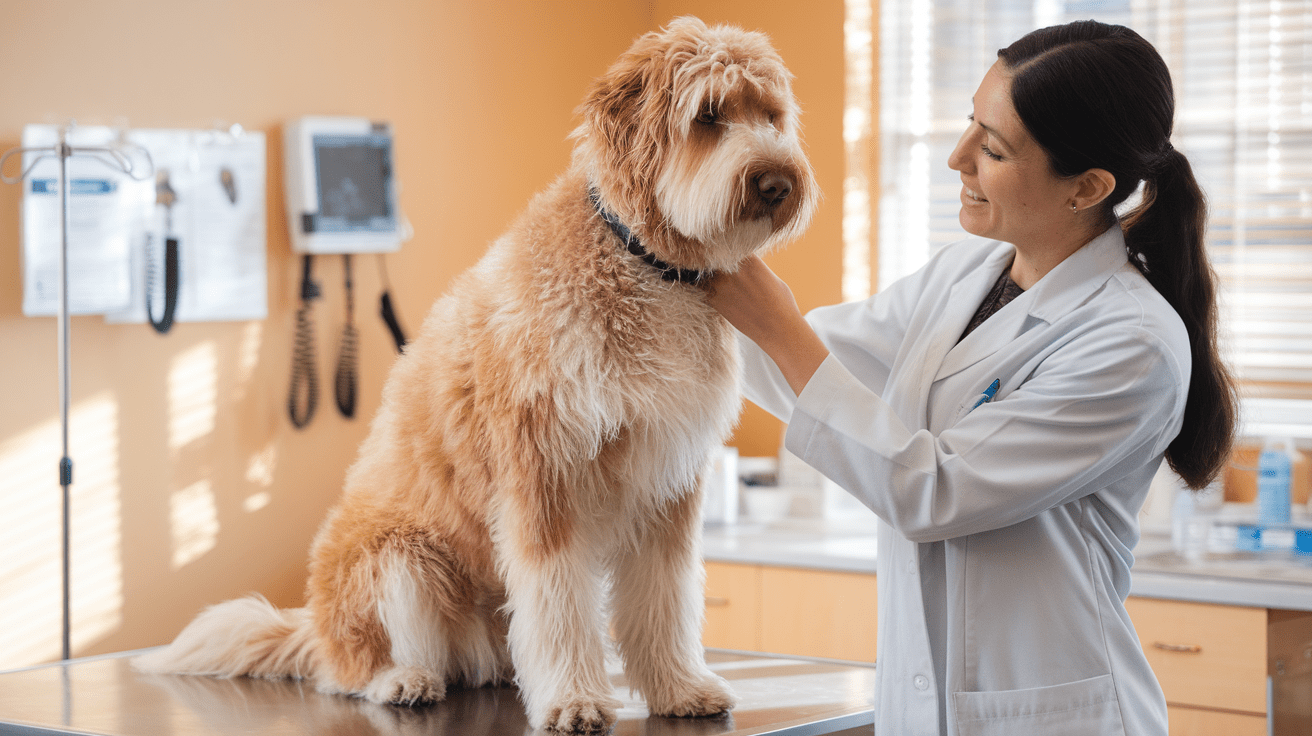
As a veterinarian who’s treated numerous Australian Labradoodles over the years, I can attest that while they’re generally healthy dogs, being proactive about their health care is essential. According to a UC Davis Veterinary Medicine study, mixed-breed dogs like Australian Labradoodles often show lower rates of genetic disorders compared to purebreds, but they still have specific health considerations we need to watch for.
Common Health Issues and Life Expectancy
While treating an elderly Australian Labradoodle named Max last month, I was reminded of how resilient these dogs can be. At 12 years old, he still maintained his playful spirit despite managing hip dysplasia. These intelligent companions typically enjoy a life span of 12-14 years when properly cared for. However, they may be prone to certain conditions:
• Hip and elbow dysplasia
• Progressive Retinal Atrophy (PRA)
• Ear infections due to their floppy ears
• Von Willebrand’s Disease (a blood clotting disorder)
Think of preventive care like maintaining a car – regular check-ups and early intervention can significantly extend your dog’s healthy years. I recommend bi-annual veterinary check-ups and regular health screenings, especially as your dog ages.
Nutrition and Dietary Requirements
Your Australian Labradoodle’s diet is like premium fuel for a high-performance vehicle – it needs the right balance to function optimally. I’ve found that these intelligent and active dogs thrive on high-quality protein sources and balanced nutrients. A proper diet should include:
• Age-appropriate premium dog food
• Adequate protein for muscle maintenance
• Omega fatty acids for coat health
• Proper portion control to prevent obesity
Finding a Reputable Australian Labradoodle Breeder
Choosing the right breeder is perhaps the most crucial decision you’ll make in your Australian Labradoodle journey. I always tell my clients it’s like choosing a pediatrician – you want someone who prioritizes health and well-being above all else. Look for breeders who:
• Provide comprehensive health testing for parent dogs
• Offer transparent genetic screening results
• Allow you to meet the puppy’s parents
• Maintain clean, healthy living conditions
• Provide ongoing support after adoption
Remember, a responsible breeder will ask you as many questions as you ask them. They’re not just selling puppies; they’re placing their beloved dogs with carefully chosen families. This mutual interview process helps ensure the best possible match between puppy and owner.
Frequently Asked Questions About Australian Labradoodles
Final Thoughts
After years of working with various dog breeds, I can confidently say that the Australian Labradoodle offers a unique combination of intelligence, adaptability, and affection that makes them exceptional family pets. While they require dedicated grooming and exercise commitments, their loyal and loving nature makes every effort worthwhile. Whether you’re seeking a gentle companion for your children, a smart training partner, or a hypoallergenic friend, these dogs consistently rise to the occasion. Remember that bringing an Australian Labradoodle into your life is a long-term commitment that requires proper research, preparation, and dedication. With the right care and attention, these remarkable dogs will reward you with years of joy, loyalty, and unconditional love.
While this guide focuses on Australian Labradoodles, you might also be interested in learning about their close cousins. For a comprehensive overview of the standard Labradoodle breed, including expert veterinary advice and care tips, check out our detailed Complete Guide to Labradoodles. This in-depth resource covers everything from training techniques to health considerations, helping you understand the subtle differences between these two wonderful designer breeds.

